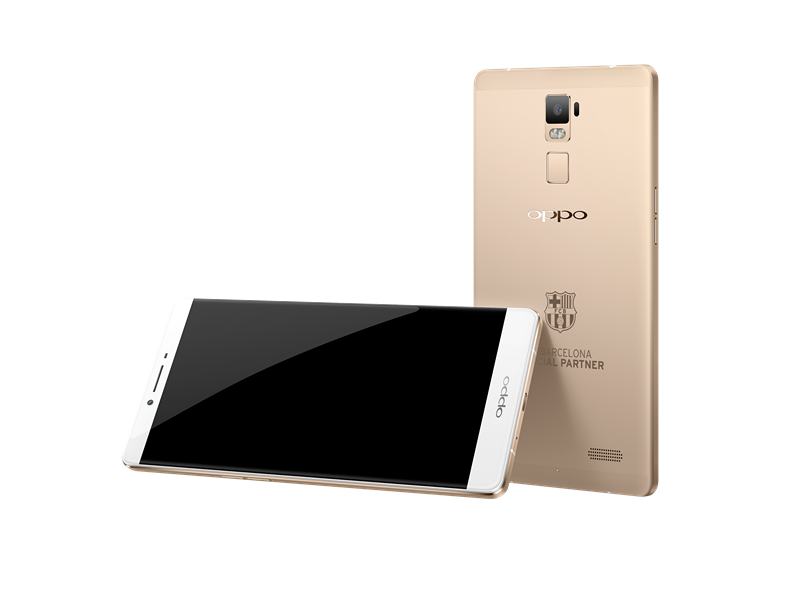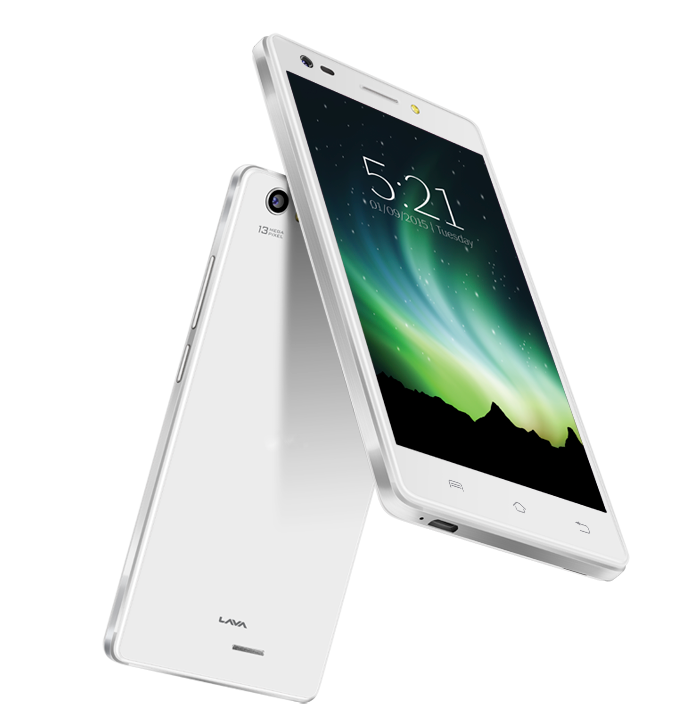Traditionally, manufacturers have contended for a spot in Apple’s supply chain, despite of its draconian demands. As seen in GTAT and the Cupertino-based company’s ugly fall out in October 2014, Apple might change the spec requirements of its customized products anytime, and expect suppliers to deliver in a short time frame. Additionally, a heavy US $50 million penalty is placed on manufacturers that breach confidential agreements. With strong product sales and a loyal consumer base, Apple might be appealing to work with, but being its supplier can be taxing.
It can also be difficult for smaller sapphire and LED suppliers to gain access to the world’s top smartphone manufacturer’s Samsung’s supply chain. The Korean manufacturer has a vertically integrated business model, and is able to in-house produce most smartphone components. So what options are manufacturers left with?
 |
|
The gold-colored back of the R7 Plus FC Barcelona Edition features the FC Barcelona insignia.Chinese smartphone maker Oppo's R7 phone models are equipped with sapphire screens.(Photo courtesy of Oppo) |
Chinese and Indian smartphone brands might be an area sapphire and LED suppliers should consider tapping into next year, based on analyses from Kelly Hsieh, Senior Manager, Mobile Communications and Device Research, TrendForce. Speaking at 2016 IT Industry Forecast Conference, which took place at Room 101 of the NTUH International Center in Taipei, Taiwan on Thursday, Hsieh noted India and China will become the major drivers of the global smartphone industry in 2016.
Smartphone shipments are expected to climb up from 1.28 billion in 2015 to reach 1.38 billion in 2016, said Hsieh. Two notable trends in the market has been decelerating smartphone growth in the market, and the rise of Chinese smartphone makers.
Three out of the top five smartphone manufacturers in 2015 were Chinese manufacturers, according to statistics compiled by Hsieh. Samsung successfully defended its number one title with 26% market share followed by Apple’s 17.6%, Huawei’s 6.7%, and Xiaomi’s 5.2%. Chinese manufacturers aggressive business strategies and their entry in the mid to low priced smartphone market is expected to drive down average smartphone retail prices by 15% in 2016 to US $300.
Additionally, government policies in China encourage the transfer from 3G LTE to 4G LTE, which is expected to spur another smartphone replacement wave. Another reason why Chinese smartphone makers might be a better option for sapphire makers is their willingness to experiment with innovative materials. Apple might have scrapped sapphire screened iPhone 6, but it has not prevented Chinese manufacturers including Huawei, Dakale, Oppo and LetTV to introduce the material in certain smartphone models. The latter three Chinese brands sapphire screened smartphones are even priced below RMB 3,000 (US $471). Sapphire suppliers interested in testing smartphone applications could test their design concept in China through partnerships with local smartphone brands.
 |
|
Indian smartphone maker Lava's Pixel V2 smartphones. (Photo courtesy of Lava) |
The Indian market also holds large potential for suppliers because it has a relatively low smartphone market penetration ratio of 20%, said Hsieh. Local smartphone manufacturers including Micromax, Intex, and Lava are some of the leading brands in the Indian market. Smartphone brand mix is more diverse in India, and less affected by telecommunication services because of the diverse local networks consumers can choose from.
India is currently the world’s second-largest telecommunications market and has shown strong growth in the past 15 years, according to a report from India Brand Equity Foundation. The country has rolled out policies to support local smartphone manufacturing that has attracted foreign manufacturers including Samsung, Xiaomi, Motorola and Lenovo to set up smartphone assembly lines in India. HTC, ASUS and Gionee have also shown interest in of establishing manufacturing sites in the country.
Another government initiative being rolled out to encourage the proliferation of smartphones has been the free high-speed wi-fi project being rolled out in 2,500 cities and towns over the next three years, reported India Brand Equity Foundation. The program comprises an investment of about US $1.06 billion, and will be implemented by the state-owned telecommunications company Bharat Sanchar Nigam (BSNL).
Telecommuncation market developments in China and India indicate smartphone demands will continue to thrive and grow at a faster rate than other global regions. Both markets have a large consumer pool, and supporting government policies that are spurring market developments forward. For LED and sapphire suppliers on the lookout for smartphone brand partnerships, finding potential local partners in these markets might be a solution to the current glut situation.
(Author: Judy Lin, Chief Editor, LEDinside)













